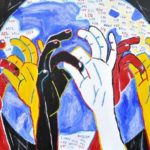You may be familiar with the Deaf community in the United States, but what do we know about the Deaf community around the world? Are there different forms of sign language? What about schools and services?
Jamie Berke has reported on international deaf communities in countries ranging from Argentina to South Africa. Deaf people in other countries have their own sign languages, cultures, and organizations. This is not a complete list, but rather some examples of what we know of the deaf community in other countries.
Africa
We know little about many areas of Africa, but those which are challenged economically are also greatly challenged with regard to resources for the deaf.
- South Africa: South Africa has a well established deaf community, and is one of the economically healthiest countries in Africa. The largest organization is the Deaf Federation of South Africa (DeafSA) which was founded in 1929 and continues to grow. South Africa has its own sign language known as SASL or South African Sign Language. There are many schools for the deaf. Unemployment and illiteracy remain high in the deaf community, but awareness is increasing. Notable deaf people from South Africa include former Olympian Terrence Parkin, and “Most Talented Person in South Africa” recipient Darren Rajbul.
Asia
Asia is a massive and diverse region of the world, and hence, the deaf community varies widely.
- Australia: Australia has its own sign language called Auslan. It has many clubs for the deaf and is home to the Cochlear Corporation.
- China: China’s deaf community is substantial. China has its own sign language, Chinese Sign Language or CSL with characters similar to written Chinese characters and many regional variations. China has many schools for the deaf as well as a technical college for the deaf.
- India: The deaf community in India is seeing progress. There are several deaf organizations, with at least two of these designed specifically for deaf women. At the present time, there are several variations of sign language, but the country is working toward adopting a single language. There are many schools for the deaf, and from ministries to social service, to vocational opportunities, life is improving for many of the deaf in the country.
Europe
Europe, especially Western Europe is similar in many ways to the U.S. with regard to resources for the deaf. Eastern Europe, in contrast, often has limited opportunities available.
- Germany: The deaf community in Germany is vibrant, though German Sign Language has only recently been recognized as a distinct language. The largest deaf organization is the German Deaf Organization which is an umbrella for many groups. Schools and post-secondary education opportunities are abundant, and options for learning abroad are also available. There are many deaf websites in German.
- Ireland: Ireland has a handful of deaf associations, several schools, and its own sign language.
- Armenia: Formerly part of the Soviet Union, Armenia is a small country with only two schools for the deaf and limited opportunities for deaf school graduates.
Latin and South America
As with other regions of the world, the resources available through Latin and South America vary widely, and the availability correlates with the economic status of the country.
- Argentina: Argentina has its own sign language, a strong deaf community, and national organizations for the deaf.
- Brazil: Brazil has multiple deaf associations and schools for the deaf, as well as a thriving sign language.
- Columbia: It is possible to go on deaf tours of Colombia, and the country has schools for the deaf and a clinic similar to the John Tracy Clinic in the United States.
- Peru: Peru is a relatively poor country, but does have an association for the deaf and its own sign language.
Middle East
The Middle East, in general, has many resources for the deaf and hard of hearing.
- Iran: Iran has numerous schools for the deaf, celebrates deafness annually, and even has its own cochlear implant center.
North America
While you are likely familiar with deaf resources in the United States, our neighbors to the north have quite abundant resources as well.
- Canada: Canada’s deaf community is large, diversified, and well established. Deaf and hard of hearing people and their families can find the right organizations and services for their needs.
- Mexico: Mexico has schools for the deaf, its own sign language, and organizations including affiliates of the U.S. Alexander Graham Bell Association for the Deaf and Hard of Hearing. Yes…..always controversial.
Organizations and opportunities for the deaf and hard of hearing vary widely around the world, but many countries have been rapidly increasing the availability of schools and sign language. Examples include Deaf International which promotes human rights for deaf people throughout the world and World Federation of the Deaf which promotes equality through sign language.













May 31, 2019
asl, deaf, deaf community, Deaf Culture, deaf education, hearing loss, Schools for the Deaf, sign language